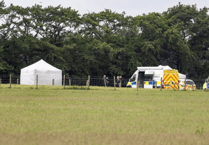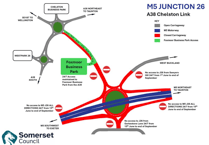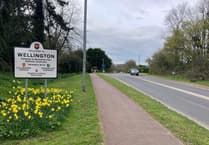THE community of Ford Street, just outside Wellington, has been suffering the worst speeding offences in Somerset and the second worst in the whole of the Avon and Somerset Constabulary area, it has been revealed.
An eight-year campaign by residents and parish councillors to introduce a 30mph speed limit through the Blackdown Hills hamlet was successful in 2015. It followed 11 reported crashes on the road.
Ford Street was said to be the worst rural accident blackspot in Taunton Deane.
A community Speedwatch group has since regularly operated near the landmark red telephone box in the centre of the village and mobile police speed cameras have frequently been located along the road.
But parish councillors have been told 17 Speedwatch sessions had been held in Ford Street so far this year and found the highest recorded speed was 50mph - and nearly one in five drivers were going faster than 35mph, the highest rate in the county.
Ford Street resident Monica Spalding, who serves on the Speedwatch group, told the Wellington Weekly: “We cannot understand why people are still speeding, why people cannot just stick to the speed limit. A lot are well over 40mph. It is both ways, up the hill and down the hill.
“There are cars we recognise, as well as those just passing through.
“I live between two blind corners which makes it very, very difficult. I cannot turn right off my drive because it is too dangerous. I have to go up the hill and turn around and come back down.”
Mrs Spalding said one driver claimed his SatNav told him he could drive at 60mph so the Speedwatch group should ‘do something about it’.
“By that time he had gone past three signs telling him it was 30 mph,” she said.
Parish clerk Neil Dalton said further safety measures were being looked at, including the use of speed indicator devices, road narrowing, and road markings at the entrance to the hamlet.
Mr Dalton said the Speedwatch group recorded vehicles travelling at 36mph and faster and reported them to the police who decided what action to take.
Although not prosecuted, drivers could receive warning letters and if they were repeat ‘offenders’ they could be placed into the police force’s automatic number plate recognition system which could notify officers that the driver had a speeding ‘issue’.
Speedwatch volunteers were not given drivers’ identities, such information remained with the police.




.jpeg?width=209&height=140&crop=209:145,smart&quality=75)
Comments
This article has no comments yet. Be the first to leave a comment.